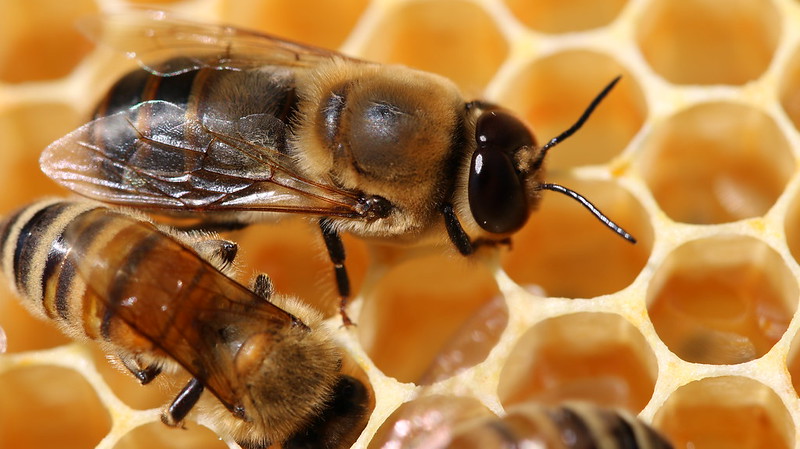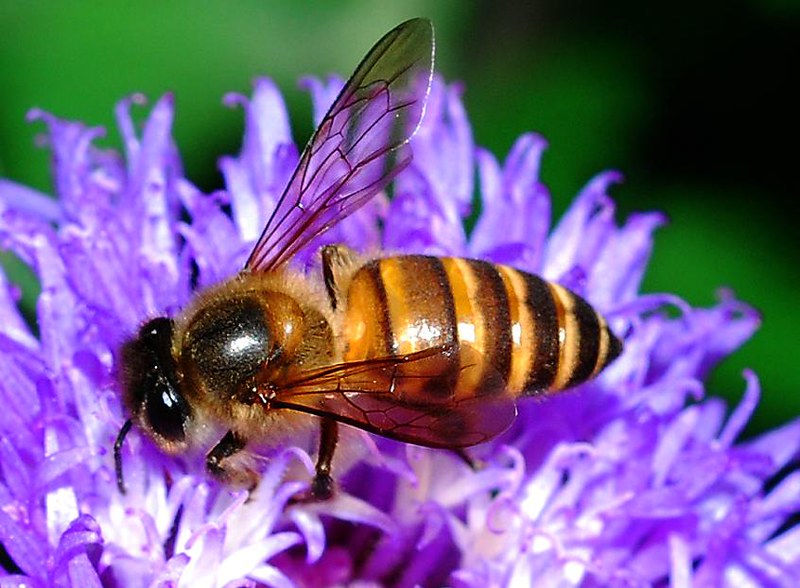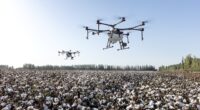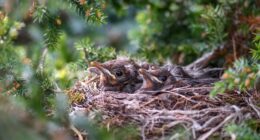We have learned that drone bees and worker bees are two different types of male and female honeybees with distinct roles in the hive. The worker bees take on the bulk of the work while drones exist solely to mate with virgin queens.
What is a drone bee?
(Photo By Phin Hall on Flickr)

Drone bees are male bees that are larger in size than worker bees. Unlike worker bees, they do not have stingers and cannot collect nectar or pollen from flowers. Instead, their sole purpose is to mate with a queen bee during her mating flight.
Typically, drone bees live for only 90 days, but their lifespan can be extended if the colony needs them for breeding purposes. During winter months when there’s less food available, drones will often be evicted from the hive as they don’t contribute to honey production like worker bees.
Interestingly enough, drone larvae develop from unfertilized eggs laid by the queen bee. This means that drones only carry genetic material from their mother and do not inherit genes from a father bee.
While drone bees may seem like they’re not contributing much to the hive compared to the hardworking female workers, they play an important role in maintaining genetic diversity within colonies which ultimately leads to healthier and more resilient hives.
What is a worker bee?
(Photo By William Cho on Flickr)

Worker bees are the female bees responsible for the day-to-day activities of a beehive. They are also known as “house bees” because they spend most of their lives inside the hive attending to various duties.
Their main responsibilities include cleaning and maintaining the hive, feeding larvae, collecting pollen and nectar, producing honey and wax, guarding the hive entrance from intruders, and caring for the queen bee.
Worker bees have a shorter lifespan compared to other types of bees in a colony. They live for about six weeks during summer months when there is plenty of work to do. During winter months or when food supplies run low, worker bees can live for up to several months.
Interestingly, worker bees undergo different stages throughout their life cycle before they become full-grown adults with specific tasks to perform in the colony. For instance, young worker bees start by cleaning cells in preparation for new eggs laid by queens while older ones go out into fields searching for pollen and nectar.
Without these hardworking house bees performing various essential tasks within a beehive ecosystem would collapse rapidly!
Drone bees Vs. Worker bees – Key differences
Drone bees and worker bees are two very distinct types of honeybees. While they may look similar, there are some key differences between them that set them apart.
Firstly, drone bees are the male members of the hive while worker bees are females. Drone bees do not have stingers, unlike their female counterparts who use theirs for defense. Instead, drone bees’ sole purpose is to mate with the queen bee.
Another difference lies in their physical appearance. Drone bees have larger bodies than worker bees and possess large eyes which help them navigate during mating flights.
In terms of behavior, drone and worker bee roles differ quite significantly too. Worker bees perform a wide range of tasks from cleaning cells to collecting nectar and pollen as well as caring for larvae – all vital tasks necessary for maintaining the health of the colony. In contrast, drones only leave their hives briefly to mate with queens before they die shortly after completing this task.
These differences highlight how each type plays an important role in maintaining a healthy beehive ecosystem!
The benefits of having both types of bees
Having both drone bees and worker bees in a beehive is beneficial for the overall health of the colony. The drones are responsible for mating with the queen bee, while workers perform most of the necessary tasks to keep the hive functioning.
One benefit of having drone bees is that they help ensure genetic diversity within a colony. Drones from different hives will mate with a queen bee, increasing genetic variation and making the colony stronger as it adapts to changing environmental conditions.
Worker bees, on the other hand, play an essential role in maintaining the hive’s daily operations. They take care of cleaning and repairing honeycomb cells, collecting nectar and pollen from flowers, producing honey and wax, feeding larvae, guarding against intruders like wasps or ants.
Without these worker bees’ contributions to maintain their hive home continuously working efficiently without any interruption would not be possible; hence it also has benefits regarding pollination which helps plants reproduce more effectively.
Both drone and worker bees serve vital roles in sustaining healthy colonies; therefore each plays an important part in ensuring successful pollination rates throughout nature’s ecosystems.
How to tell a drone bee from a worker bee
One of the key differences between drone bees and worker bees is their physical appearance. Drone bees are larger than worker bees, with bigger eyes that meet on top of their heads. They also have a more rounded abdomen compared to the tapered one of worker bees.
Another way to distinguish between these two types of bees is through their behavior and role in the hive. Worker bees are constantly busy tending to the needs of the queen bee and collecting nectar from flowers for honey production. In contrast, drone bees do not collect food or participate in hive maintenance tasks; they simply mate with virgin queens.
When observing a group of buzzing honeybees, it’s easy to spot the drones since they tend to fly slower than workers due to their heavier weight. Additionally, drones often congregate outside near hive entrances waiting for queens during mating season.
Understanding how to tell apart drone and worker honeybees can be helpful when studying bee behavior or trying your hand at beekeeping as it will allow you to understand each type’s unique role within a colony!
Do drone bees bite?
Drone bees are often mistaken for aggressive attackers due to their large size and loud buzzing sound. However, contrary to popular belief, drone bees do not have a stinger and cannot bite or sting humans.
The primary role of the drone bee is to mate with the queen bee during her nuptial flight. This means that drones spend most of their time outside the hive waiting for the opportunity to mate with a queen from another colony.
Unlike worker bees, who collect pollen and nectar, drone bees do not have any specific duties within the hive. As such, they do not possess a stinger as it would serve no purpose in carrying out their responsibilities.
Although drone bees may seem intimidating due to their size and noise level, there is no need to fear them. They are harmless creatures that play an important role in maintaining healthy honeybee colonies by helping queens produce offspring through mating.
While drones may appear imposing at first glance, they pose no threat whatsoever since they lack both venomous stingers and biting capabilities like other insects or animals we encounter on a daily basis.
How is a queen bee born?
The queen bee is the most important member of a honeybee colony, as she is responsible for laying eggs that will become new bees. But how does a queen bee come to be?
Queen bees are not born like other bees in the colony. Instead, they are specially raised from larvae by worker bees who feed them with an exclusive diet called “royal jelly.” This special food triggers the development of reproductive organs in the larva and transforms it into a potential queen.
Once fully developed, several virgin queens will emerge from their cells at the same time. They then fight each other until only one remains alive – this process is known as “queen dueling.”
After winning her fight, the new queen takes over egg-laying duties from her mother or predecessor. She can lay up to 1,500 eggs per day and can live for several years if well cared for by her workers.
While worker and drone bees have specific roles within their hive, it’s clear that without a strong leader in the form of a queen bee, no honeybee colony could survive long-term.
Featured Image By – Ian Lindsay from Pixabay









